RONAN
SULICH
&
MARGARET
NOLAN
TERRACE
HOUSE
‘Living in a Victorian terrace means that space and scale are limited. While I still love the art and culture of the 18th century, I’m also drawn to the contemporary art of our time, and increasingly add small modern pieces into the mix, where they speak to each other across the ages.’
Ronan Sulich
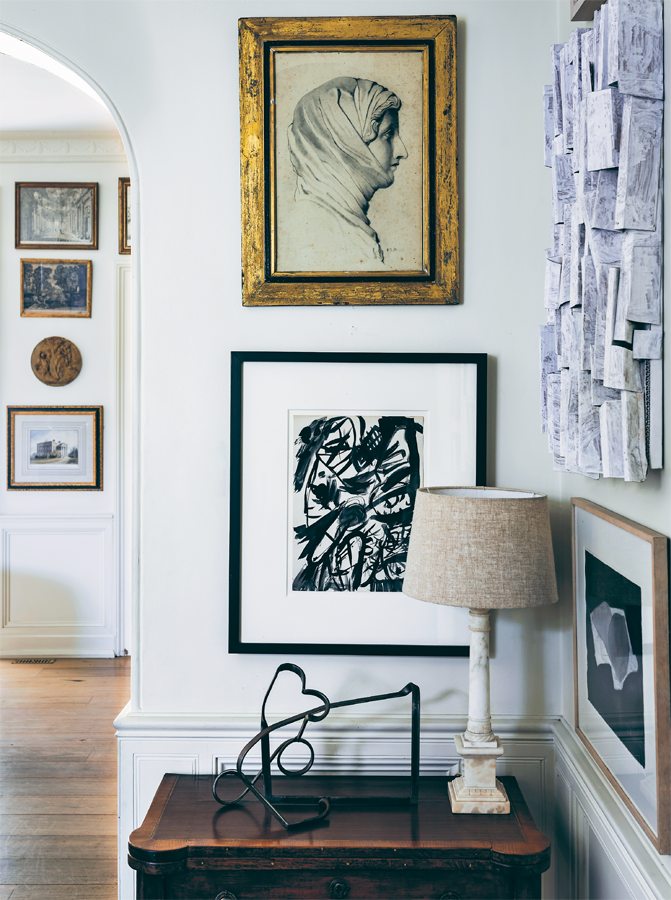
The classical and contemporary co-exist harmoniously.

Detail of Caroline Duffy artwork.
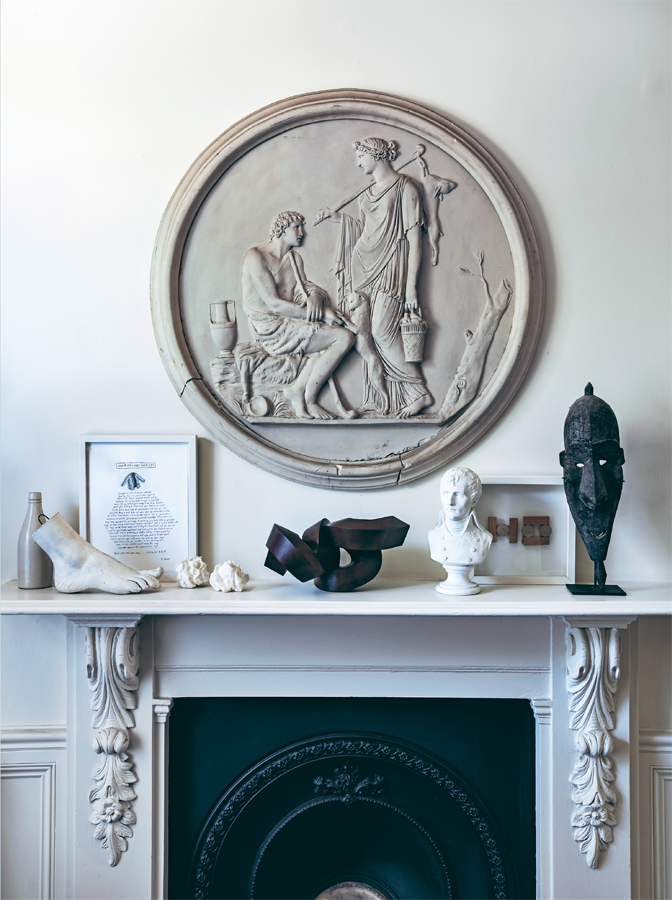
The abstract, in the form of a Clement Meadmore sculpture, is offset against more figurative works.
RONAN SULICH & MARGARET NOLAN
TERRACE HOUSE
Despite living in their modest Victorian terrace in Sydney’s Darlinghurst for twenty years, the interior is never allowed, in the words of its owner Ronan Sulich, ‘to set like a jelly’. There is an ongoing desire to inject some newness, while paying due respect to what has gone before. ‘The consequence of having a lack of space is that we think harder about what will work. We can’t afford to be as devil-may-care as we would have been in the past.’ Two things have driven the shift. ‘When we lived in London, picking up the perfect 18th century chair or mezzotint wasn’t hard, whereas in Sydney we live in this vibrant contemporary arts area and my interest has broadened,’ he says.
This has combined with a corresponding transition in the nature of Ronan’s work. He is now Australian representative for auction house Christie’s. Previously its decorative arts expert, he expanded his expertise to take in contemporary art in 2007. ‘I needed to become informed professionally, and this has also seeped into my personal interest,’ he says.
The other person in the equation is his wife, Margaret Nolan, whose graphic design agency Denomination specialises in wine labels, and who has a penchant for the challengingly modern. ‘It used to mean that all the contemporary pieces stayed in Margaret’s office, but now we are finding more ways, more of the time, to combine the two,’ says Ronan.
Navigating the jigsaw of aesthetic decisions required to introduce new pieces into this tightly orchestrated mix is tricky but, he says, ‘it is often the object itself that determines where it should go. Sometimes you bring a piece home and you think, “Oh, that doesn’t work”, but you develop an instinct over time, and we know the house so well that it is more hit than miss these days.’
When we begin to dissect what works, and why, it often comes down to a material, a colour or even a certain attitude. A long-term admirer of the Sir John Soane’s Museum in London, Ronan has, for instance, collected pieces in plaster which, in turn, create a visual connection with the chalky finish of the three-dimensional cardboard artwork by Caroline Duffy. A Corten steel sculpture in a series of graphic planes, also by Duffy, echoes the dark mahogany of the dining chairs and an artwork by Joan Ross, which mashes together the colonial imagery of John Glover with Gainsborough and graffiti tagging. The Ross work, he says, ‘sends a specific political message about the appropriation of the country in the name of George III’.
Another meeting of contrary worlds is a small artwork commissioned entirely through social media. Artist Philjames’ Instagram feed showcases his work, in which he reimagines familiar image types, from old masters to religious icons, through the careful introduction of offbeat pop culture characters or emblems. Normally Philjames works with prints, but Ronan gave him a 19th century oil to which he added a toothy, multi-eyed cartoon centipede startlingly at odds with the serenity of the portrait, but eerily apt in its composition.
Most of the other portraits, which Ronan describes as ‘instant ancestors’, remain undoctored and are framed and placed with a great sense of balance, both with other paintings and the objects with which they interact. ‘Sometimes,’ says Ronan, ‘we have unwittingly created a display where the bond is, say, religious artefacts – albeit across different centuries and continents.’ For instance, a 19th century Russian icon passed though the family from one of Margaret’s great-grandparents, who was a missionary in Russia, and Portuguese santos figures, collected and given by friends, sit beside church candlesticks used as lamp bases.
Interwoven are pieces by the artistic children of the house – Oscar, an art student, and Elisabeth, who is still at high school. ‘Often people are too hasty to throw out their children’s work,’ says Ronan. ‘Some we have framed, other pieces remain in folders, some we have displayed – it is a constantly moveable feast.’ One piece that has found a sympathetic spot is a stoneware glazed bowl by Oscar, etched with images of friends drinking beer in the park. The quirky sense of the mundane, played out in a pottery piece, appeals to Ronan’s sensibility, with the brown tonality of the piece perfectly echoing the wall colour.
In his professional role, Ronan receives many a call lamenting, ‘Our children don’t want any of our things, can we sell them?’, but he takes a different approach. Only recently, he and Margaret have taken charge of a pair of Georgian giltwood sconces, two George II side chairs and an impressive family coat of arms from the estate of her parents. ‘I haven’t lost my love of antiques, and the connection to my parents-in-law is a lovely thing to live with.’

Philjames’ intervention into a traditional oil painting sums up the shift in Ronan’s interests. The bowl is by Ronan and Margaret’s son, Oscar.

A set of engravings after van Dyck, depicting twelve beauties from the court of Charles I.
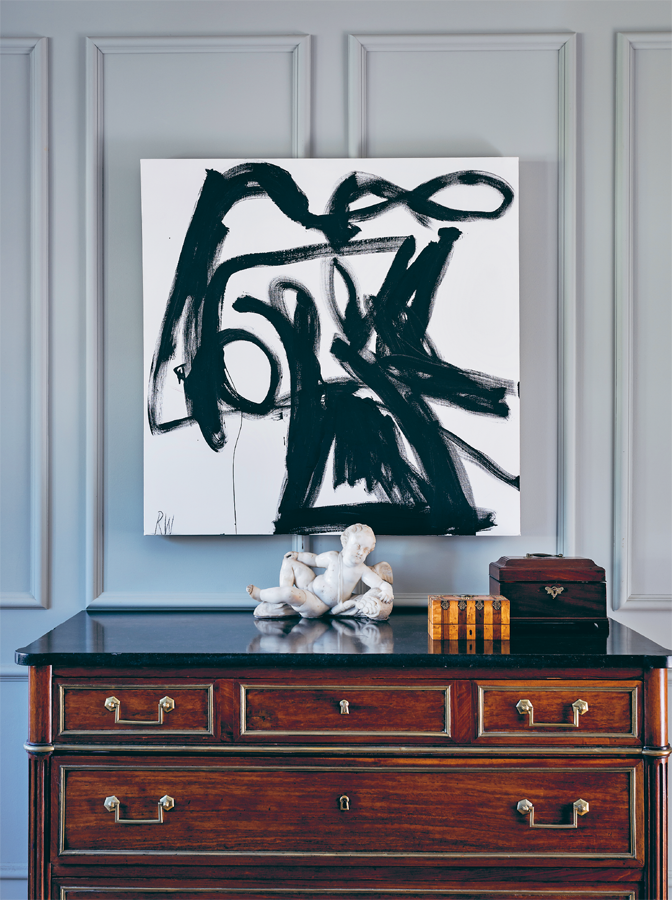
While there’s a measured quality to the house, a closer look often reveals some interesting juxtapositions, such as the 17th century Flemish reclining cherub against a Dick Watkins painting.
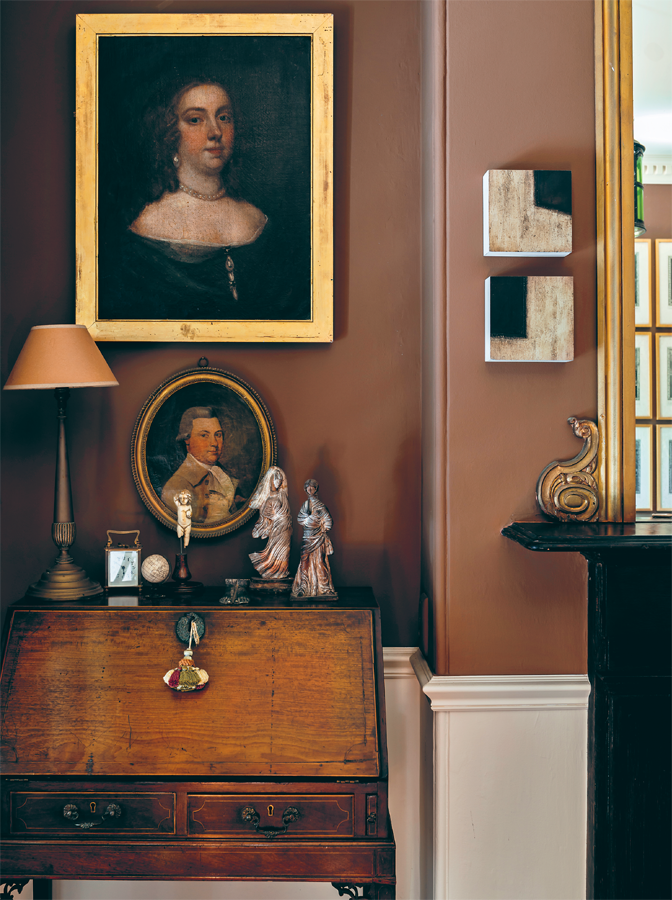
Tonally, the small works by Salvatore Gerardi work with the ‘instant ancestors’, but were created hundreds of years later. The George III desk belonged to Margaret’s great-grandmother.
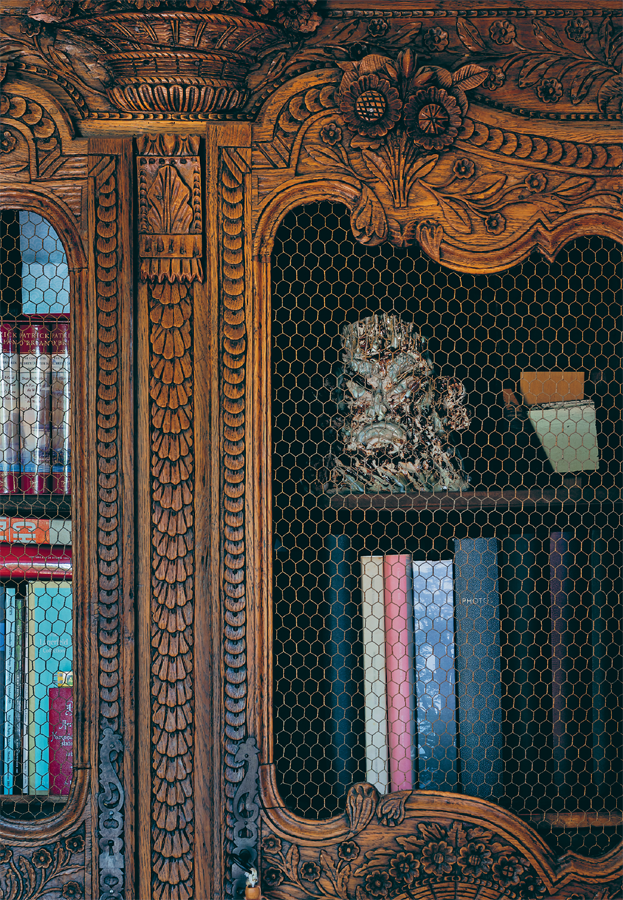
A ceramic by one of Oscar’s friends nestles in an 18th century French oak armoire.